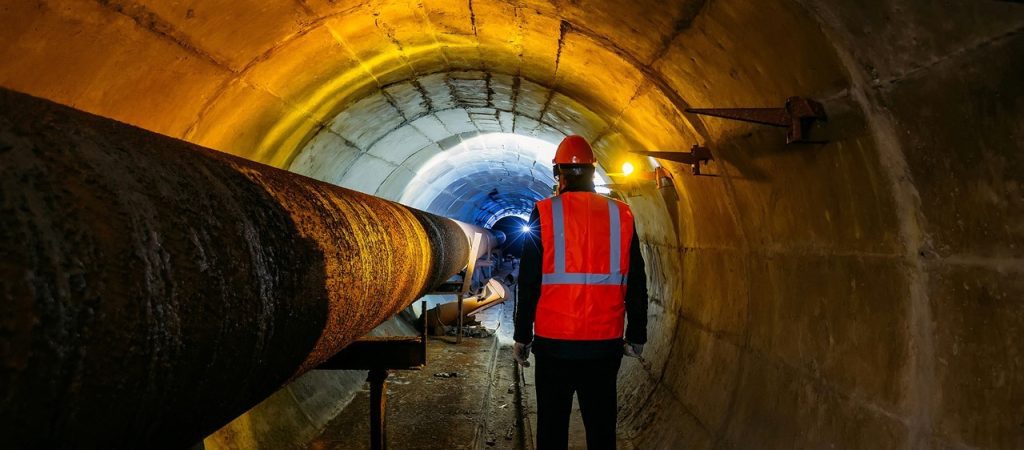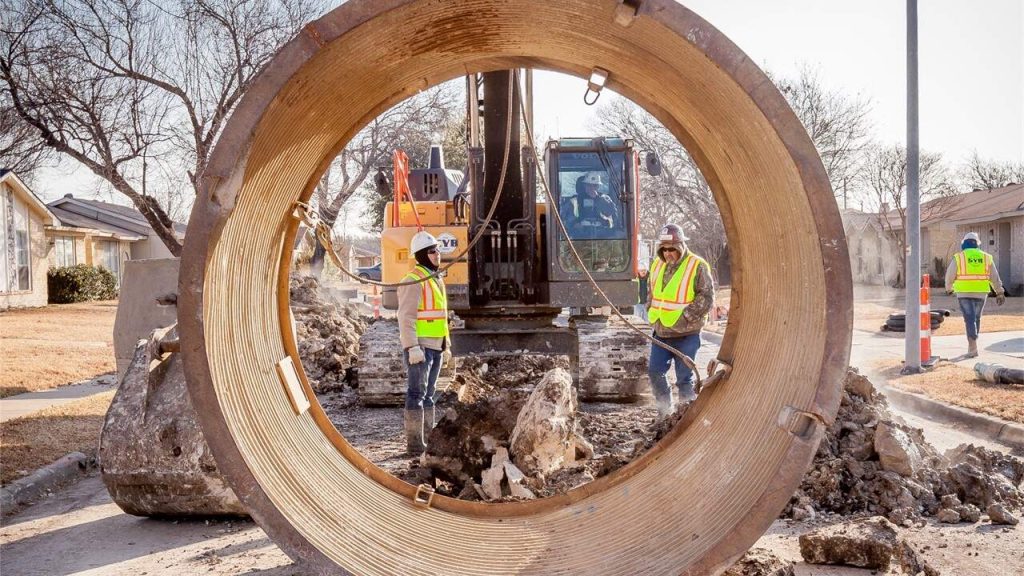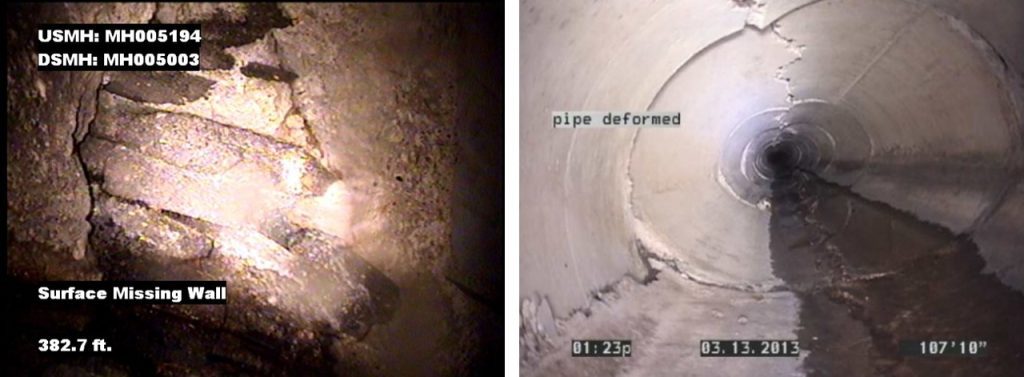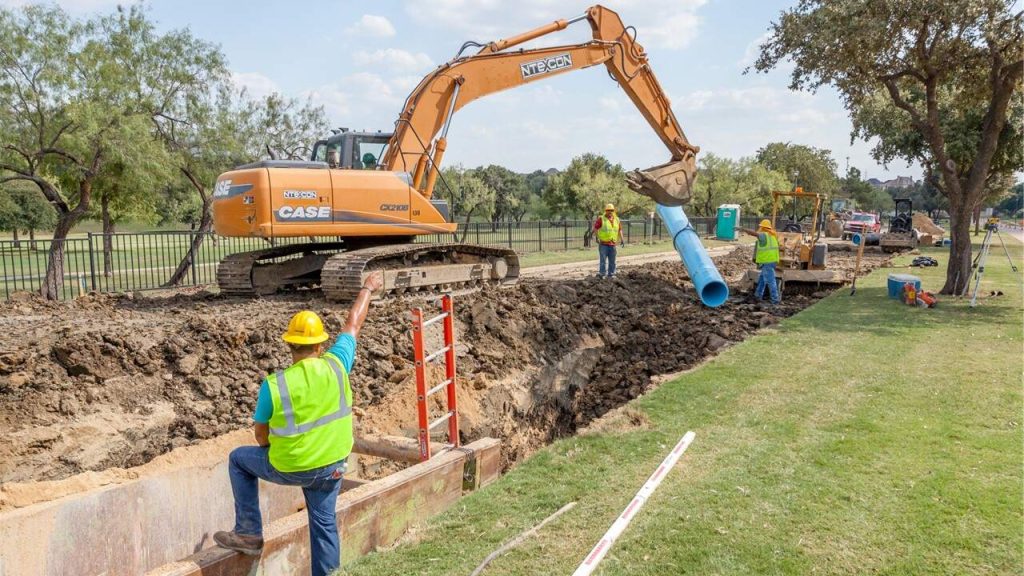What’s Important About Rehabilitating Water/Wastewater Pipelines?
Buried beneath the surface—under neighborhood streets and communities—lie miles upon miles of pipelines, which convey the clean water we drink to our homes, and return the wastewater we create for treatment and discharge.
Many of us are unaware of the hidden risk resulting from aged infrastructure—until a broken pipeline shuts down a major roadway or pollutes a cherished stream.
This aging water infrastructure is posing risks to communities as they struggle to keep up with shifting populations and ever-changing regulations. One solution is to invest in proper pipe rehabilitation and replacement.
The American Society of Civil Engineers (ASCE) gave U.S. drinking water infrastructure a grade of C- in 2021, up from a D during the last report card in 2017. Wastewater and storm water conveyance systems remained in the Ds. These poor grades result from failure to invest in renovating or maintaining existing systems.
Limited budgets and competing funding needs force utilities to spend wisely in ways that produce the most impact toward improving their system. The consequences of not addressing this include economic loss, steep financial costs, great loss of quality and so much more.
What’s Important Now?
With limited funding, communities and cities need to understand their priorities and make informed decisions. This includes condition assessment, cost-benefit analysis, facility optimization and system sustainability.
Condition Assessment:
The first and most important step in solving a problem is to pinpoint the issue(s). Conducting a thorough assessment of an existing pipe’s condition includes inspecting for:
-
- Physical damage or defects
- Excavation damage
- Corrosion
- Deformities
- Leaks
- Cracks
Evaluating the risks of each issue will allow engineers and planners to prioritize projects. Factors to consider include likelihood of failure and consequences of failure.
Another factor is the criticality of pipelines. Some pipes may serve essential community facilities such as fire stations and hospitals, which need to ensure the continuity of services in the event of a failure.
AI defect detection models help identify and recognize pipe defects, saving time as a valuable tool for engineering review.
Did you know that innovations with AI can now identify defects with high accuracy? Halff’s machine learning scientists are employing AI defect detection models for Fort Worth Storm Drain Rehabilitation Project.
Cost-Benefit Analysis:
Weighing the financial costs against the potential benefits, (e.g. improved water quality, reduced maintenance costs, extended asset life), is also essential for making sound economic decisions
It is also good to have a thorough, current knowledge of construction techniques for both open cut and trenchless. A properly selected construction method will not only extend the pipe’s life but also minimize costs associated with right-of-way acquisition, paving repairs, utility relocations and public disruptions.
The first phase for this water/wastewater pipe rehabilitation in the Cottonwood Valley neighborhood used CIPP for the most deteriorated pipes, minimizing impacts to the golf course. It also reduced construction costs and saved time for the City of Irving!
Optimization:
Merely replacing a segment of pipe is not enough in some cases. Each water/wastewater line replacement and rehabilitation project provides the opportunity to improve the system as a whole by increasing efficiency, inter-operability and accessibility.
Sustainability:
Sustainability is more than a buzzword—it involves much more.
This can be accomplished through:
-
- Selecting environmentally-friendly materials
- Coordinating with adjacent utilities
- Gathering public input to limit long-term social impacts
- Planning for future rehabilitation
- Considering impacts from climate change
Engaging with the community and stakeholders throughout planning and implementation fosters transparency, addresses concerns and can help secure future support. Sustainable practices and long-term planning considers future growth and population trends to meet future demands while stewarding resources well.
Every step of the process, from design to replacement, ensures the long-term sustainability of our water and wastewater infrastructure.
Water Line Design Success: Rochelle Boulevard
Rehabilitation of aging water lines may be widespread, but Halff takes pride in producing sustainable and cost-effective designs for every project.
Halff designed a 20-inch water line within Las Colinas in the City of Irving. Our engineers recognized early on that the existing alignment was not optimal. After conducting a route study, Halff recommended Rochelle Boulevard as the optimal alignment.
Crews install a water line along Rochelle Boulevard in Irving, TX.
The recommended alignment laid along a well-traveled, pedestrian-friendly residential thoroughfare. Halff put significant effort into the alignment design, construction method selection and construction phasing to minimize impacts on traffic, the neighborhoods and surrounding spaces. Halff then worked closely with the City of Irving to address concerns from adjacent neighborhoods.
Construction proceeded successfully and was completed two months ahead of schedule, providing amazing and speedy benefits for Las Colinas citizens!
Halff demonstrated that our meticulous process results in effective solutions for water/wastewater rehabilitation and replacement needs.
The Halff Advantage
Halff leverages more than 70 years of experience in the water utilities industry to develop creative, sound solutions.
Just like Rochelle Boulevard, our teams have completed hundreds of miles of pipeline projects, including new, replacement and rehabilitation for pipe sizes up to 120 inches in diameter.
Our teams also know what is required to fix aging water lines and infrastructure, and we can meet any challenge head-on.
Halff services a large portion of the southern United States region including Texas, Oklahoma, Arkansas, Louisiana and Florida.
Don’t delay – get started today! Please reach out to our water professionals to get started with your project needs. Contact Water/Wastewater Practice Leader Bill Pembroke, PE (wPembroke@halff.com) to get more information.









